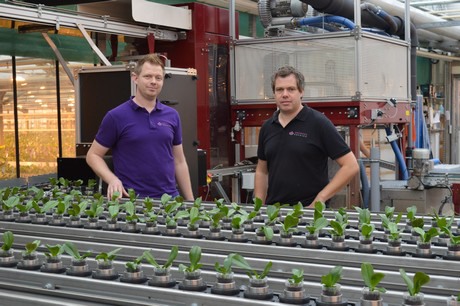
Co-owners Peter Bremkens and Christian Bremkens presenting the sorting machine from Flier Systems.
Uniform young plants
Before working with the sorting machine from Flier, Bremkens Orchids used to sort their young plants at an earlier stage. "When leaving the lab, the starting material was directly sorted in five sizes and then transplanted into a plug. Even though they were sorted, each plant grew on their on pace and differences started to show after a couple of weeks. One of the major problems we had to deal with were the small plants in the tray. These plants are often thrown away by the grower as they are too small to pot."
Sorting at a later stage
So, in order to offer growers a more uniform crop, they decided to purchase a sorting machine. They opted for the sorting machine from Flier Systems that is equipped with a camera from Aris. And next to supplying the grower with a more uniform crop, it also increases Bremkens' production volume. "With this machine we sort the plants, which are transplanted in a PP 4.6cm pot, at a later stage; after twelve weeks. This way, the plants will have a better micro climate in the first phase and it enables us to grow more plants per square meter."
How does it work?
So, how does the machine sort the young plants? In this series of photos and videos, the entire process is explained.

After growing in the small pots for 12 weeks, the plants receive their final quality check before they are put on the conveyor belt of the sorting machine.
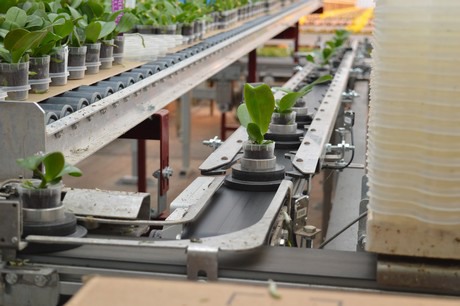
Plants on the conveyor belt.
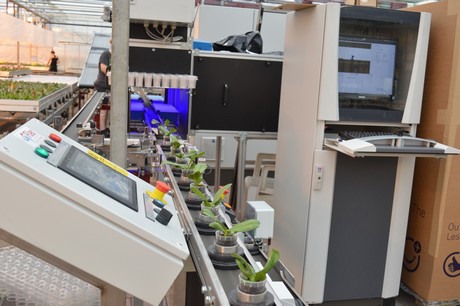
Plants on their way to be photographed by the Aris camera. This camera takes one photo of the top of the plant, and twelve pictures of the side to calculate the size of the plant.
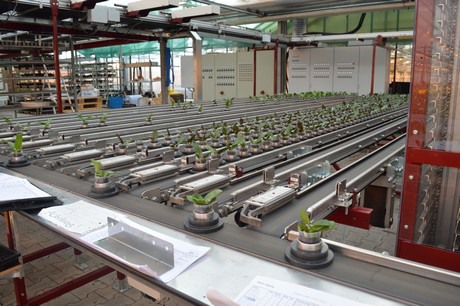
When the size is determined, the similar-sized plants will be placed in the same line on the belt. At Bremkens, they work with five sizes, having the largest and smallest size as a starting point. The three other sizes in between are calculated.
A short video that shows the sorting process.
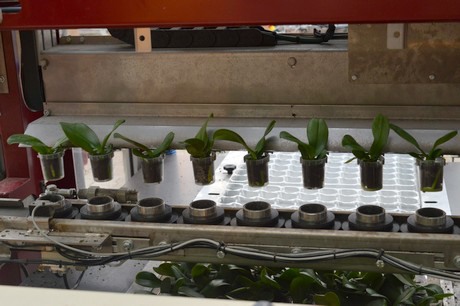
After being sorted, and when the belt is filled with 60 plants (the amount that fits into a tray), they are transported to the area where they are put in a tray.
This video shows how they are put in a tray.
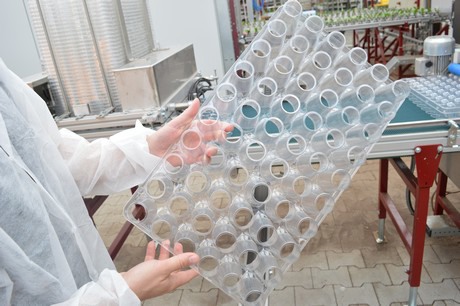
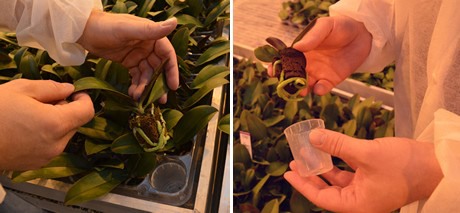
On the left Bremkens shows how easy it is to take the plant out of the pot; the pot will remain in the tray. On the right, the pot.
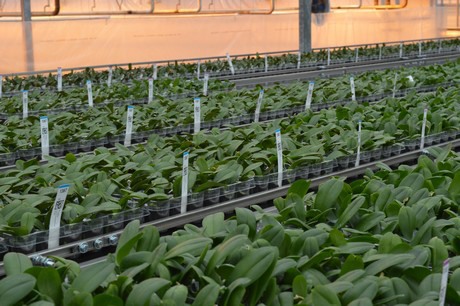
When the trays are filled with the young plants, all trays will be sorted in one line.
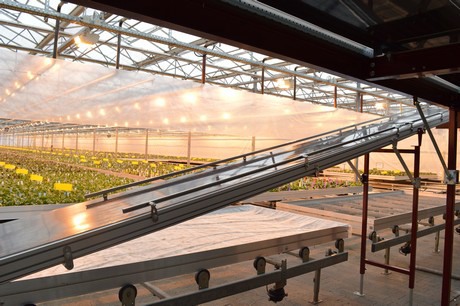
When the line is full, a bench can be filled and the plants will remain in the greenhouse for another 6 to 12 weeks before being shipped out to the growers.
For more information
Bremkens Orchids

Christian Bremkens
Email: christian@bremkens-orchids.de
www.bremkens-orchids.com
